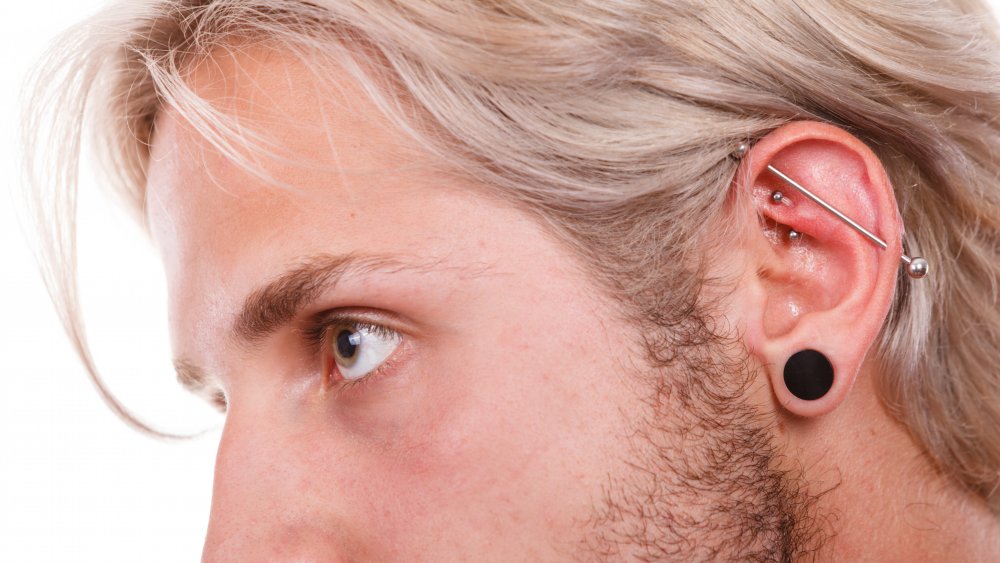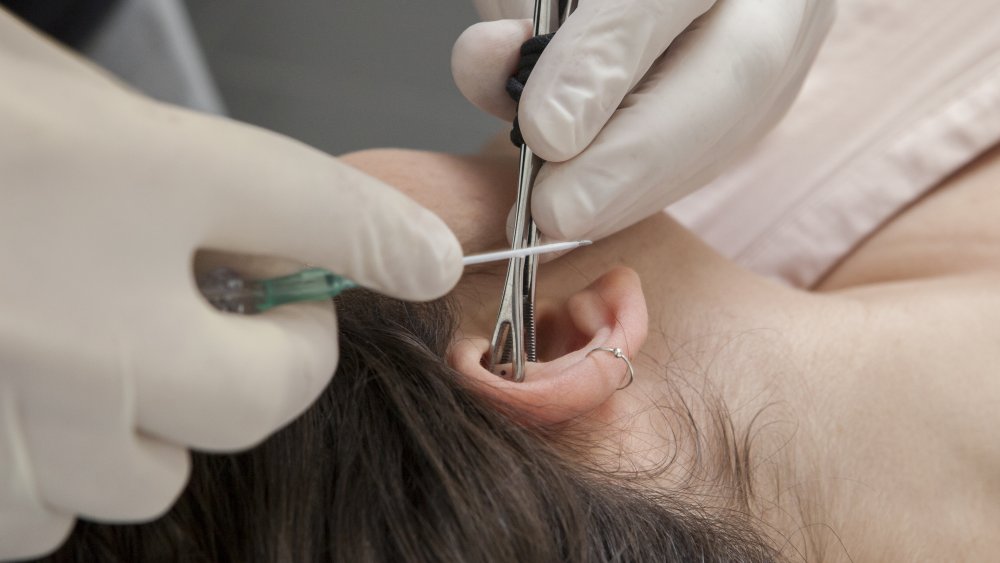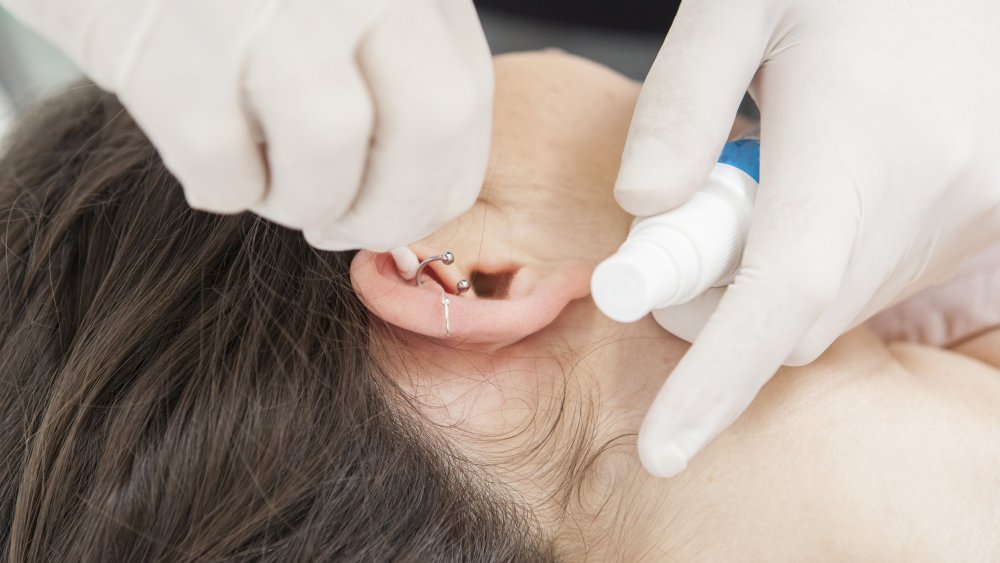The Truth About Rook Piercings
If you're in the market for a new piercing or two, now's the perfect time. With 2019 having been the year of the curated ear, multiple piercings and cultivated "earscapes" (as the cool kids are calling it) are starting to gain mainstream traction (via Fast Company). But if you're struggling to try to figure out where you want to get your next hole, we totally feel you.
If you're looking to stand out with a unique and less common piercing, the rook might just be the spot for you. However, before you jump in ears first, here's what you need to know about rook piercings.
The healing process for a rook piercing might take longer than a regular lobe piercing
The rook is in a very particular spot above the daith. It can be a delicate spot to pierce, so the piercing can take six to nine months to heal, depending on how diligent you are in your post-piercing care. London-based piercer Rhianna Jones told Byrdie, "It is always advisable to try to avoid sleeping on any new ear piercing until fully healed as it can cause problems and delay the healing." To keep it healthy, clean it regularly (and carefully) and don't remove it, even temporarily (via Bustle). She also recommends a titanium or 18-carat gold bar for the initial healing period (it's also what she offers her clients).
In terms of pain, it's not one that's going to have you sobbing, but be warned — it will definitely hurt more and for longer than your regular lobe piercing, just like other piercings that involve cartilage, such as a tragus piercing. Even though it's not the most painful piercing you can get, you're not going to want to try piercing it yourself. It's always recommended that you find a professional piercer to do this work for you.
What's it like to get your rook pierced?
According to Healthline, your piercer will first take a look at your ear to determine whether or not your ear is a good fit for this kind of piercing. They'll then mark the spot where they're going to pierce and check in with you to see if you want to move it or not. Don't be afraid to speak up and ask them to move it! You'll be stuck with this piercing for a long time, so you have a say in where it should go.
The puncture will be quick, but the actual insertion of the jewelry might be the most painful. The jewelry is thicker than what you put in your lobe, so that's part of why you'll have to leave it in for longer than the typical six to eight weeks you left your lobe piercings in for. The chance of side effects for this particular piercing are higher, so your aftercare is super important to maintain. And while swelling and redness are common after your rook gets pierced, if you experience pain, tenderness, yellow or green discharge, or flu-like symptoms that last a week or more, you're going to need medical attention.
However, as long as you keep your piercing healthy, you should have no problems with your cool (and conversation-worthy) piece of jewelry!


